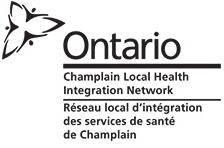If you are an organization that would like to partner with us to help keep this database up-to-date, please contact us for more information.
Crisis and Emergency
Refers to all programs that provide immediate assistance for people who are currently experiencing severe emotional distress; for any situation that is life-threatening, or poses harm to someone; or unable to cope with a problem that demands immediate attention. Crisis services help deal with the immediate crisis, and restore people back to their original (higher) level of function so that they can identify and deal with their problems.
1. Child Welfare including Children's Aid Society (CAS)
The child welfare / child protection system is a group of services that promote the well-being of children by protecting children from abuse or neglect, ensuring they are safe, and strengthening families so that they can successfully care for their children.
Suggest a resource
2. Crisis Lines including Telephone, Online and Chat
Are you in a crisis? Crisis lines offer free, immediate and confidential one-on-one assistance to callers in need and usually operate 24 hours a day, 7 days a week. They are generally staffed by either paid professionals, or trained volunteers. They will listen, offer support and advice, and if necessary, will try to help the caller get connected to help in his/her community.
Suggest a resource
3. Walk-In Counselling
Looking for an appointment the same day, or within a few days? Walk-in counselling clinics provide counseling services, without a need to book a long time in advance. They can be helpful for many issues such as family conflict, stress, grief, depression, anxiety, relationship issues, separation, divroce or abuse. Most of the time, no appointment is required, though some clinics may require you to call ahead the same day to book appointments for that day.
Suggest a resource
4. Hospital Emergency Department
Is there an emergency such as medical or mental health emergency? If less intense options (e.g. calling a crisis line) are not possible or haven't helped, then it may be helpful to visit the local hospital Emergency Department. Typical mental health emergencies include:
* thoughts of suicide to the point where the person requires emergency help to keep them from ending their life;
* manic episode or psychosis where a person is behaving in an irrational way with inability to function.
Suggest a resource
5. Emergency Shelter and Housing
There are various shelters that people can use when they have no place to go.
Emergency shelters are places for people to live temporarily when they don't have a place to stay. Emergency shelters (such as women's shelters) are primarily meant for those fleeing an abusive relationship, sexual abuse or domestic violence. Some shelters limit their clientele by gender or age.
Homeless shelters are temporary places to stay, usually meant for homeless people. Usually located in downtown areas, they are similar to emergency shelters. The main difference is that homeless shelters are usually open to anyone, without regard to the reason for need. Some shelters limit their clientele by gender or age.
Suggest a resource
6. Women's Shelters
Women's shelters are places where women (and their children) can go to stay, and are typically for women fleeing domestic violence from their partners or spouses. Women's shelters offer safe, temporary housing and usually other services to enable a return to independent living such as counselling and referrals to community resources.
Suggest a resource






